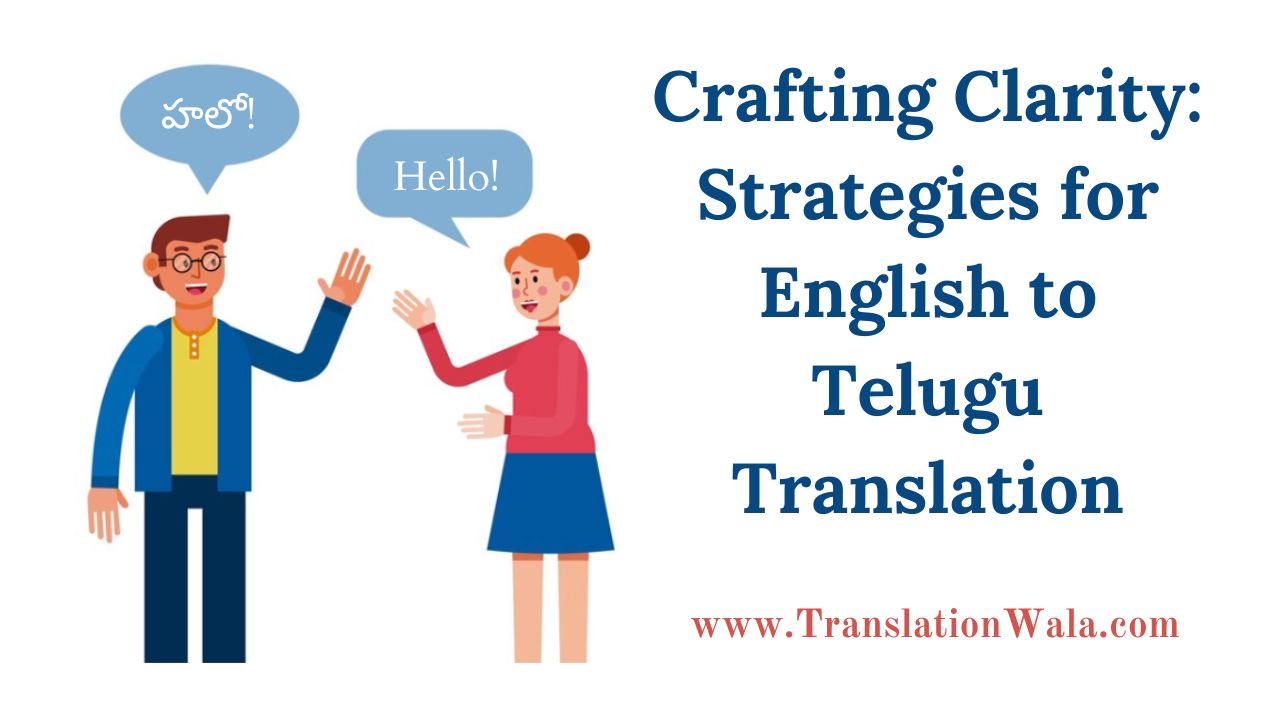Getting from English to Telugu is not like translating from English to other languages. As members of the same Indo-European language family, both languages have some things in common. However, their structure and culture are very different, so the translator needs to pay close attention to these differences. This piece talks about different ways to make sure that information is clear and correct when English to Telugu Translation.
Understanding the Nuances of Telugu
Telugu is a Dravidian language that is spoken by more than 80 million people around the world. It has a rich literary history and its own unique grammar rules.
- Sentence Structure: Subject-Object-Verb (SOV) sentence construction is used in Telugu, but not in English. To keep the natural flow in Telugu, this means that the order of the sentences has to be changed during translation.
- Verb Conjugations: In Telugu, verbs are changed based on the number, person, gender, and mood. To get the message across, translators must correctly pick up on these subtleties.
- Honorifics: There is a complicated system of honorifics used in Telugu to show respect based on family, age, and social standing. It is very important to use the right title to avoid offending someone or looking rude.
- Script and Phonology: The script used for Telugu is different from the Latin alphabet used for English. To make sure that names and technical terms are translated correctly, translators should know how to write and speak Telugu.
Strategies for Effective Translation
- Master the Source Language: It is very important to have a good grasp of English language, words, and culture connections. This helps the English to Telugu Translation understand what the author really meant and copy it correctly.
- Cultivate Telugu Expertise: Learn how to speak and write Telugu well. To get a better sense of the subtleties of the Telugu language, read, watch, and listen to a lot of it.
- Embrace Cultural Sensitivity: Understand that English and Telugu people have different ethnic backgrounds. Change the language, style, and themes so that they are more appropriate for the Telugu audience.
- Maintain Linguistic Accuracy: Focus on getting the main ideas and facts translated correctly. Make sure that scientific terms are translated correctly into Telugu.
- Strive for Clarity and Readability: Most of the time, Telugu sentences are shorter than English sentences. Break up long English words into short, easy-to-understand Telugu phrases. Try to make the flow feel fluid, like it came from original Telugu material.
Also Read: Expressing Essence: English to Bengali Translation Brilliance
Bridging the Gap: Practical Tips
- Terminology Management: To keep things consistent throughout the project, make a list of words that are often translated. This is very important for translating complicated things.
- Utilize Translation Tools: Machine translation isn’t a replacement for human knowledge, but you can use translation memory (TM) tools to cut down on words that are used over and over and make sure everything is consistent.
- Embrace Collaborative Translation: When working on big projects, it might be helpful to work with experts in the field to make sure the translated content fits the topic and audience.
Beyond the Basics: Advanced Considerations
- Literary Translation: It is very important to capture the spirit, style, and emotional effect of the original work when adapting artistic material like poems or literature. They might have to use their imaginations while still staying true to the main message.
- Localization: Translation and localization go hand in hand when it comes to marketing materials or websites. Change the content, like pictures, jokes, and references, so it fits with Telugu culture.
- Stay Updated: The Telugu language keeps getting better. Keep up with current events and how people use words to make sure that your translations are still useful and powerful.
Conclusion
English to Telugu Translation needs a diverse method that strikes a balance between cultural awareness and correct language use. It is possible for translators to bridge the language gap and communicate clearly and effectively with Telugu audiences by using the above tactics. Remember that translation is more than just changing words; it’s also about getting thoughts and feelings across from one society to another.
